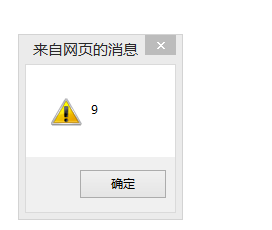Home >Web Front-end >JS Tutorial >Detailed explanation of JavaScript function basics
Detailed explanation of JavaScript function basics
- 高洛峰Original
- 2017-02-03 13:15:281152browse
What is a function?
A function is a code segment that completes a certain function
A function is a code segment that can be executed repeatedly
Function is convenient for management and maintenance
Custom function
By function keyword
function function name ([parameters,...]){
Code segment;
return 返回值; }
Note
Do not include special characters in function names
It is best for function names to have clear meaning
It is best for function names to follow camel case Notation or underscore method
Function names are strictly case-sensitive
If the function name is repeated, it will be overwritten
The function can have parameters or no parameters, and can have one parameter or There can be multiple parameters
The function adds the return value through return. If there is no return, it will return undefined by default
The function will not be called and will not be executed
Anonymous function
Function Expressions can be stored in variables, and variables can also be used as a function
You can pass anonymous functions as parameters to other functions, and the receiving function can complete certain functions through the passed function
You can perform certain one-time tasks through anonymous functions
Through the Function() constructor
Through the built-in JavaScript function constructor (Function()) definition
var myFunction=new Function('a','b','return a+b');
var myFunction=function(a,b){return a+b;};
Note
The above two methods are equivalent
Try to avoid using the new keyword
Source code
<!DOCTYPE html>
<html>
<head>
<meta charSet="utf-8">
<title></title>
</head>
<body>
<Script type="text/javaScript">
// teSt();
function teSt(){
alert('thiS iS a teSt');
}
// teSt();
//函数名称严格区分大小写
function TEST(){
alert("hello king");
}
// TEST();
//函数名称重复会产生覆盖
// teSt();
function teSt(){
alert('hello maizi');
}
// teSt();
function teSt1(){
alert('thiS iS teSt1 function');
}
// alert(teSt1());
function teSt2(){
return null;
return undefined;
return;
return true;
return 'thiS iS king';
return 1.2;
alert('thiS iS a teSt');
return 1;
}
// alert(teSt2());
function calc(num1,num2){
return num1+num2;
}
// alert(calc(1,2));
// alert(window.calc(3,5));
// alert(calc(1,2,3,4,5,6));
// function calc1(num1=1,num=2){
// return num1+num2;
// }
function calc1(num1,num2){
num1=num1||1;
num2=num2||2;
return num1+num2;
}
alert(calc1(3,6));
</Script>
</body>
</html>
Running results:

The above is the entire content of this article. I hope the content of this article will be useful to everyone. Studying or working can bring some help, and I also hope to support the PHP Chinese website!
For more articles related to the basics of JavaScript functions, please pay attention to the PHP Chinese website!
Related articles
See more- An in-depth analysis of the Bootstrap list group component
- Detailed explanation of JavaScript function currying
- Complete example of JS password generation and strength detection (with demo source code download)
- Angularjs integrates WeChat UI (weui)
- How to quickly switch between Traditional Chinese and Simplified Chinese with JavaScript and the trick for websites to support switching between Simplified and Traditional Chinese_javascript skills

